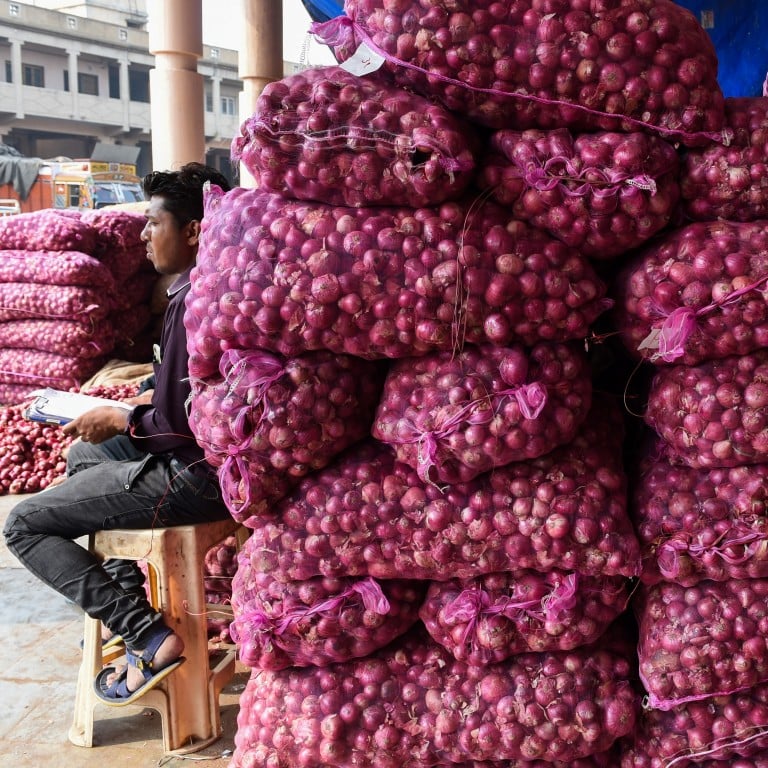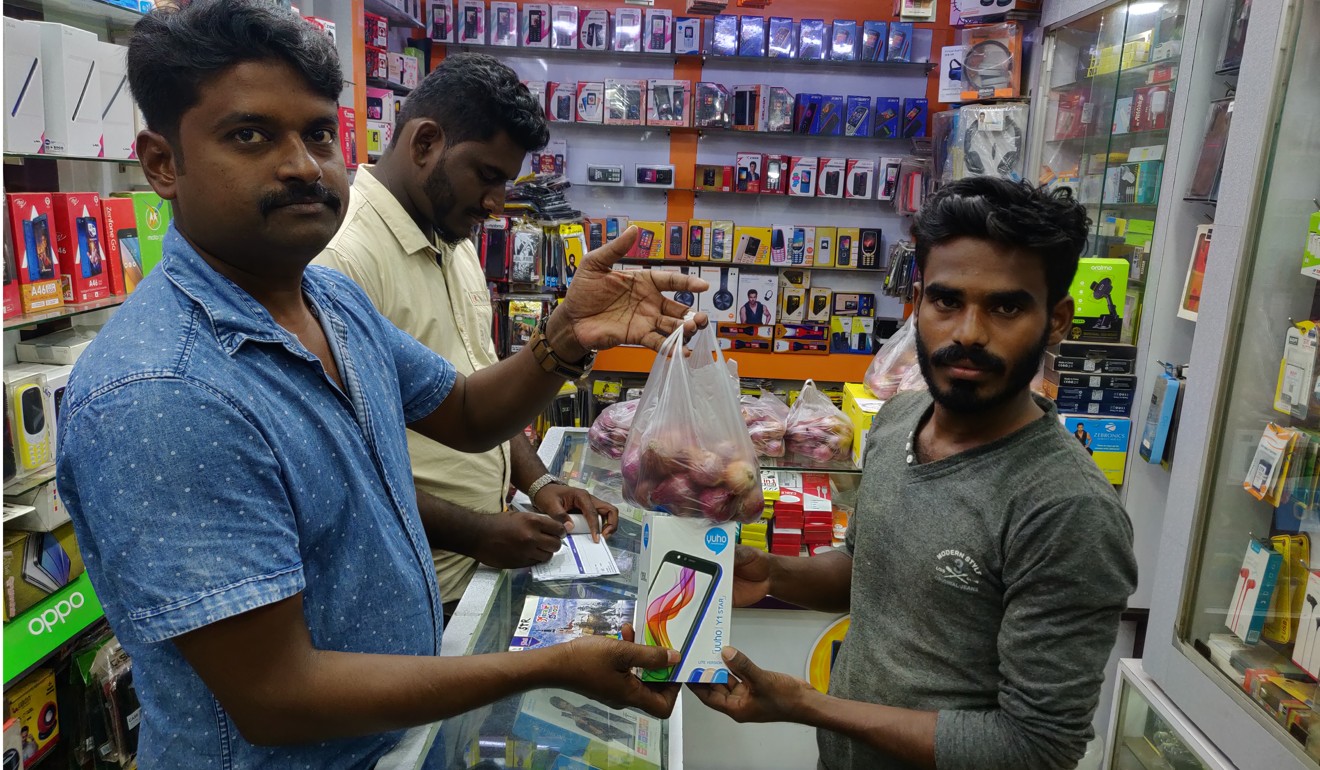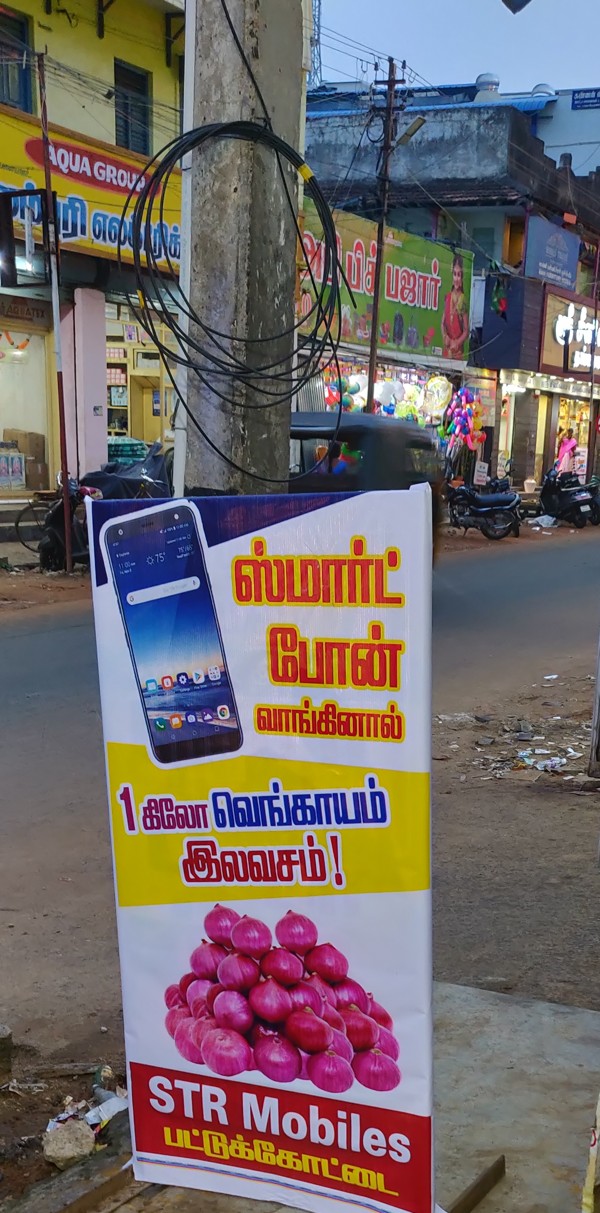
India’s onion crisis sparks violence, memes and a nightmare for Narendra Modi
- As prices rise, politicians have been giving onions away in garlands and as wedding gifts, while they’re also being used to market smartphones
- Many economists argue that the price of onions, sometimes seen as a key marker of economic stability, can be an omen for a government’s fortunes
When Saravana Kumar sold 20 smartphones within two days in the tiny town of Pattukottai it was a major cause for celebration – and confirmation of a maverick marketing strategy.
Kumar would usually struggle to sell two handsets a day, but this time those smartphones were flying off the shelves and all because of the free gifts he was giving away with each model.
Those gifts were not headphones, or covers, or cashback coupons, but something his low-key shop wouldn’t usually even keep in stock: a kilogram of onions.

Onion prices in the country have soared tenfold this year, sparking a nationwide outcry, questions in parliament, a spate of bizarre onion-related crime and dozens of viral memes as the outraged citizens of the world’s second most populous nation find themselves unable to afford their staple food.
‘Pork is for the gods’: can Singapore solve Hong Kong’s pig problem?
Back in the Kumar household, there has been a foretaste of the public’s anger.
“My wife is quite upset with me that I was giving away onions for free when prices are rocketing. But it’s a marketing strategy for my small business venture and it paid off, ” says Kumar, adding that he plans to gift the leftover onions to his wife.
Whether that placates Mrs Kumar, the rest of the Indian public may well be less forgiving.
In recent days half a dozen onion-linked robberies, assaults, fist-fights and attacks on trucks carrying the vegetable have been reported across the country.

Politicians have been quick to spot an opportunity, with opposition parties rallying in the streets wearing onion garlands and offering onions as wedding gifts.
A few state governments have started selling onions at a subsidised price while analysts believe the onion crisis was behind the Reserve Bank of India’s surprise move to hold rates steady last week.
There are even signs the crisis is having an impact internationally. India is the world’s second-largest onion producer and makes US$360 million annually by exporting its surplus, but in light of the price rises the government has moved to ban exports of the vegetable and is rushing to import from places like Turkey and Egypt.
POLITICAL VEGETABLE
The political importance of the onion is underscored by its unrivalled role in Indian cuisine. Soaring prices are felt not only in households but in the nationally important restaurant businesses too as eateries, often unsuccessfully, struggle to replace onions with cabbage and radish.
Many low and medium price outlets have taken popular items like onion dosas, a crispy breakfast dish made with fermented batter, and onion bajjis off their menus altogether.
“It’s become quite expensive to buy onions and this has severely hit our budget. We can’t raise the prices of our dishes nor we can serve them without onion as it affects the taste. So, our only option is to take them off the menu,” said Manjunatha, the manager of a mid-priced restaurant Srinidhi Sagar in Bangalore.

Onions have played a major role in numerous elections since the 1980s and parties who ignore the vegetable’s political undercurrents do so at their peril.
Many economists argue that the price of onions, sometimes seen as a key marker of economic stability, can be an omen for any government’s fortunes.
Former finance minister and opposition lawmaker Palaniappan Chidambaram has been scathing of the government’s economic performance, writing in a recent column for The Indian Express that Finance Minister Nirmala Sitharaman and Modi were “floundering and struggling” to control the onion prices, and accusing the ministers of resorting to “bluff and bluster” in handling the economy.
Rising pork prices hide a far bigger problem for China’s economy
In another highly politicised dig, V Narayanasamy, chief minister of the union territory Puducherry, distributed bags of onions to party workers to mark the birthday of opposition leader Sonia Gandhi on December 9.
Some commentators see such incidents as a sign the Modi administration has lost all control of a snowballing media narrative.
In one telling exchange, when confronted with the price rises in the parliament, Finance Minister Sitharaman, replied: “I don’t eat much onion and garlic. I come from a family that doesn’t have much to do with onion.”
The remark was widely criticised for being insensitive to the plight of ordinary citizens.
Meanwhile, Indian social media has become inundated with onion-inspired content. The hashtags #OnionPrices and #OnionCrisis constantly trend on Twitter while on the video-sharing app, TikTok, users constantly mock the rising prices.
Memes of people paying taxi fares with onions instead of cash or onions becoming a stronger currency than the US dollar and British pound have become commonplace.
And with experts saying any change in prices is unlikely before next year at the earliest, the field day on social media looks set to last for some time yet.
With additional reporting by Reuters

